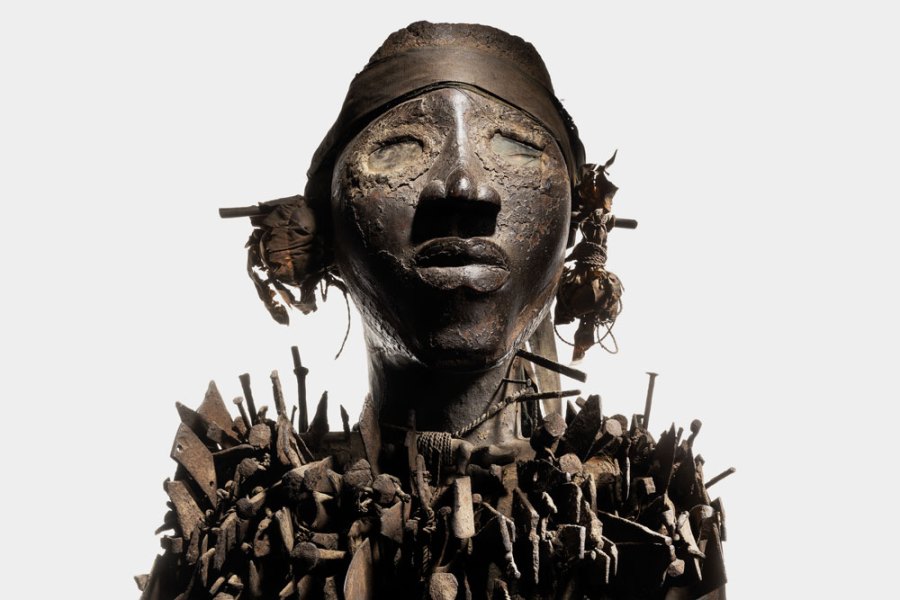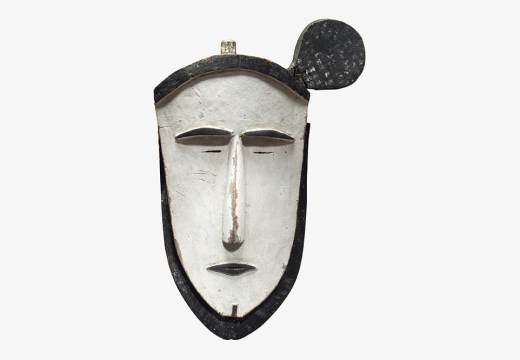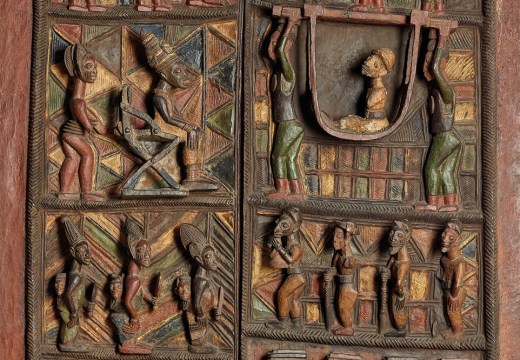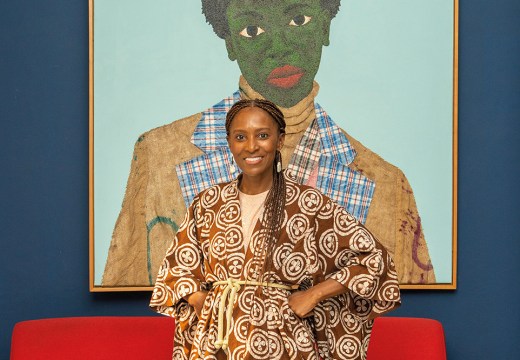From the July/August 2023 issue of Apollo. Preview and subscribe here.
At the opening of ‘The Language of Beauty in African Art’ at the Art Institute of Chicago last November, its co-curator Constantine Petridis said that the exhibition (which had travelled from the Kimbell) aimed to ‘qualify and recognise the expression of qualities of beauty and ugliness in African art’ not just from a Western perspective, but from an African one. In the context of African art, Petridis noted, ‘Aesthetics are more than just about visual form. They denote meaning and they denote function.’
In many cultures across Africa, beauty has an intrinsic moral, ethical and social significance that is inseparable from its aesthetic impact. Often, it is one way to guarantee the ritual or social effectiveness of an object. This exhibition represents one among several recent efforts by Western institutions to recalibrate their approach to classical African art. Since 1907, when Pablo Picasso visited the Trocadéro Museum in Paris with André Derain, classical African sculpture has often been understood in the West through the eyes of modernist artists and the collectors who admired them – and who believed they were lifting these objects from ethnographic otherness into the realm of art. They taught Picasso that painting ‘is not an aesthetic process – it is a form of magic that stands between us and the hostile universe, a means of taking power, imposing a form on our terrors as well as our wishes’. This interpretation suited his creative needs at the time; it hastened the revolutions of Cubism and abstraction.
Since then, however, Western appreciation of classical African art has been frozen in time, many scholars have argued. In the values it applies, the hierarchies it endorses and the canon it recognises, it is still largely framed by the seminal book Negerplastik (1915) by Carl Einstein, with its celebration of ‘pure plastic forms’. Meanwhile, others argue that Western opinions on what constitutes authenticity are shaped by an outmoded historical understanding of sub-Saharan African history, both pre- and post-colonisation.

Head (late 19th century), Fang artist. Sotheby’s Paris (€4m–€6m)
Thanks to recent reappraisals of such positions, institutions are re-evaluating their collecting strategies, rattled by ethical arguments relating to restitution. Adenike Cosgrove, of consultancy IMO DARA, reflects that in relation to African classical art: ‘They are redefining their concept of “good”.’ One necessary criterion is proof that the object left the continent of Africa before the 1970 UNESCO convention on cultural property.
Carlo Bella, director of Pace African & Oceanic Art, comments: ‘Museums now have so many guidelines that we have reduced sales to institutions.’ However, the impact has been minimal for private collectors, Bella says. His New York-based gallery avoids controversial areas such as archaeological material, ivory objects or, like almost all dealers these days, Benin bronzes. Instead, it focuses on wooden sculpture more than 100 years old, in a market that has remained largely the same for more than a century: ‘We have adapted to the political situation of our time; we offer museum-quality, great art, which is safe to own.’ Within these parameters, it is an exciting moment for the market. ‘We are in a generational shift,’ Bella says. Many collections established in the 1960s, ’70s and ’80s are coming up for sale: ‘With prices depressed by the wariness of some collectors, this is a buyer’s market, with fantastic opportunities.’
Pace benefits from a client base focused on modern and contemporary art. Not only are these clients used to ambitious prices, but because of modernism’s debt to African and Oceanic classical art, they are attuned to its aesthetic. Bella suggests that the market in Europe is broader, with collectors attached to art from former colonies, while in America, more attention is paid to the qualities that ensure value: provenance, patina and authenticity. But as Cosgrove suggests, even these criteria can be problematic: ‘The question of originality that plagues all art becomes particularly critical for this collecting field. Distinguishing features alone are not enough to prove the item’s authenticity. Provenance, patina, age, style, subject matter and medium all play important parts in determining what “good” looks like.’ However, Cosgrove warns that while provenance can add up to 20 per cent of value, particularly if you can place a piece in a famous published collection of the early 20th century: ‘Not all of these provenances are real and not all provenance is created equal.’

Statue (late 19th century), Suku artist. Collection of Didier Claes; Photo: courtesy Didier Claes; © Hughes Dubois
The dealer Laurent Granier confirms that collectors want published objects from important collections, preferring those with a ‘dry’ patina over shinier objects. He suggests that, at the very top end of the market, established collectors are sitting on their collections, thereby making it hard for younger dealers like himself to find outstanding pieces. In the middle market, however, he reports growing interest among savvy younger collectors. Granier makes no distinction between masks, statues, plates and other artefacts, suggesting that these reflect Western hierarchies of value. He has created exhibitions that try to show the connections between ethnic groups – like the Bambara, Dogon and Senufo, all of whom inhabit modern-day Mali and neighbouring countries – rather than separating them out. While respecting those who focus on sculptural form, he suggests there is a new audience interested in other cultural aspects: ‘If we reread the ethnographic material, we can reinvent this market.’ At Parcours des Mondes in Paris in September he will display 15 objects, all with secure 19th-century provenance, including a Kota reliquary figure from Gabon once in the collection of renowned dealer Paul Guillaume.
Bruno Claessens, a former European head of African and Oceanic Art at Christie’s, seeks ‘to open up the Western-dominated perspective in the art world,’ by combining classical with contemporary African art at his Antwerp-based gallery Duende Art Projects. He suggests that the auction market for classical African art is still dominated by objects from French West Africa that are accorded privileged status by their arrival in Europe before 1930. He cites the Fang head from Gabon that was the lead lot in the sale at Sotheby’s Paris of the collection of Hélène Leloup in June (estimate €4m–€6m). Other iconic objects include nkisi n’kondi figures made by the central African Kongo people, such as the one that sold last June at Christie’s Paris for €2m (estimate €1m–€1.5m).

Nkisi n’kondi figure (late 19th century), Kongo artist. Christie’s Paris, €2m
Despite Claessens’ best efforts, it is harder to persuade collectors to find similar value in works from Nigeria and Tanzania, he says, although a striking Mbembe statue from Nigeria from the noted Durand-Dessert collection sold for €1.9m (estimate €2m–€3m) at Christie’s Paris in June 2018. However, the Brussels-based market stalwart Didier Claes reports that: ‘The taste of customers is constantly changing, constantly evolving […] faster than a few years ago.’ He qualifies this: ‘Nevertheless, there is still great interest in the type of works that may have influenced the modern art period in the 1930s. The same is true for works that may have had an impact on contemporary artists, such as Basquiat.’ He notes that there are a number of Greek collectors new to the market, but few as yet from the African continent.
Meanwhile, Sotheby’s international chairman Jean Fritts says that the market has become much more global, with collectors in Singapore, Taiwan, Hong Kong, Malaysia and Australia, as well as Europe and the United States, buying across mediums and styles. The top of the market still reflects an interest in the history of abstraction: in 2020, a Mahongwe reliquary figure from Gabon sold in New York for $1.4m, twice the top estimate ($500,000–$700,000), while a magnificent Baulé mask from the Ivory Coast was chased to €4.7m in Paris in June 2019.
Another trend identified by Fritts’s Paris colleague Pierre Mollfulleda is the revival of the middle market, driven by new collectors: ‘It is really visible.’ The Leloup sale reflects that strength by offering unique objects from a variety of cultures with estimates up to €50,000. Fritts says: ‘There are still very rare authentic objects at this price point.’
From the July/August 2023 issue of Apollo. Preview and subscribe here.
Unlimited access from just $16 every 3 months
Subscribe to get unlimited and exclusive access to the top art stories, interviews and exhibition reviews.














![Masterpiece [Re]discovery 2022. Photo: Ben Fisher Photography, courtesy of Masterpiece London](http://www.apollo-magazine.com/wp-content/uploads/2022/07/MPL2022_4263.jpg)
It’s time for the government of London to return to its rightful home